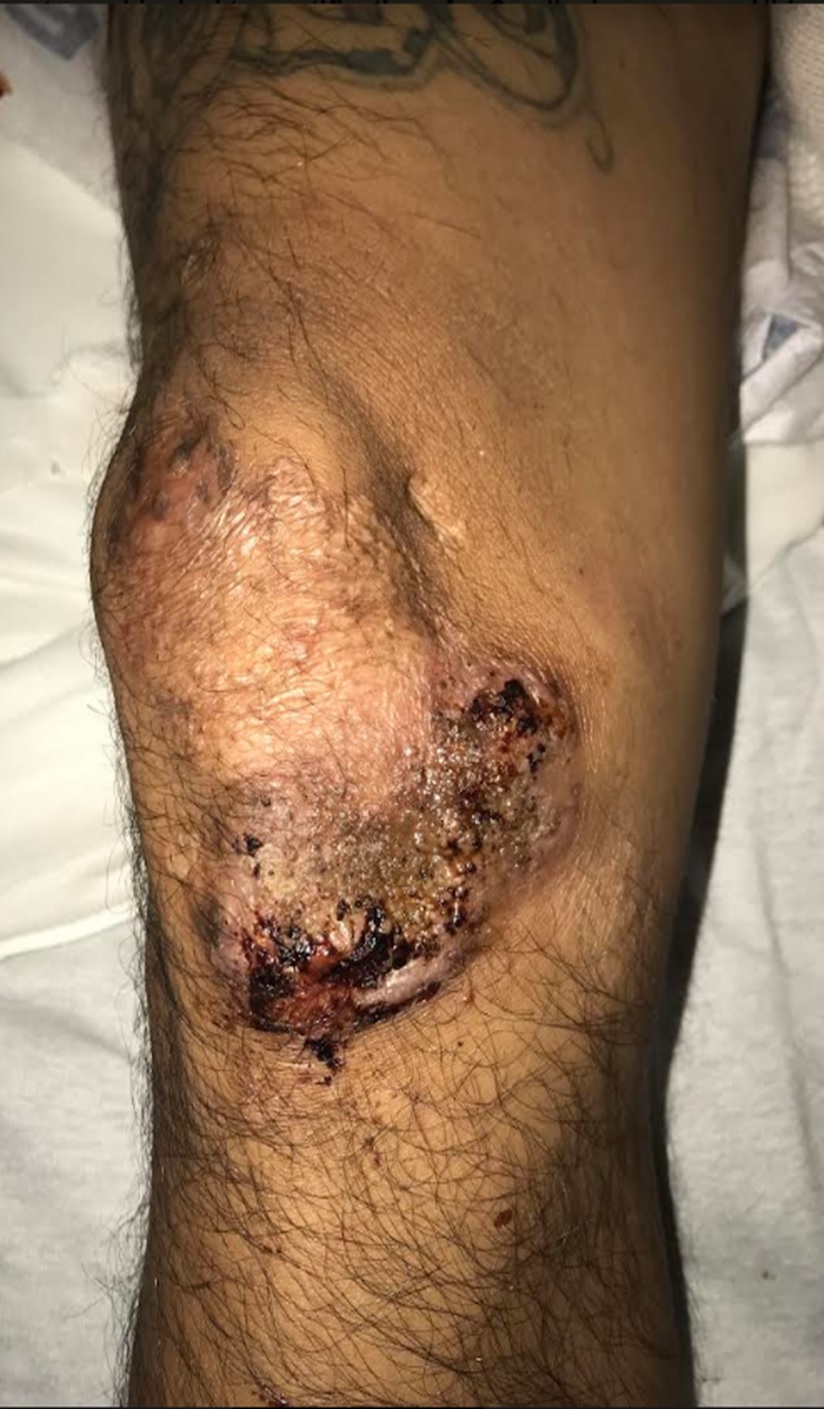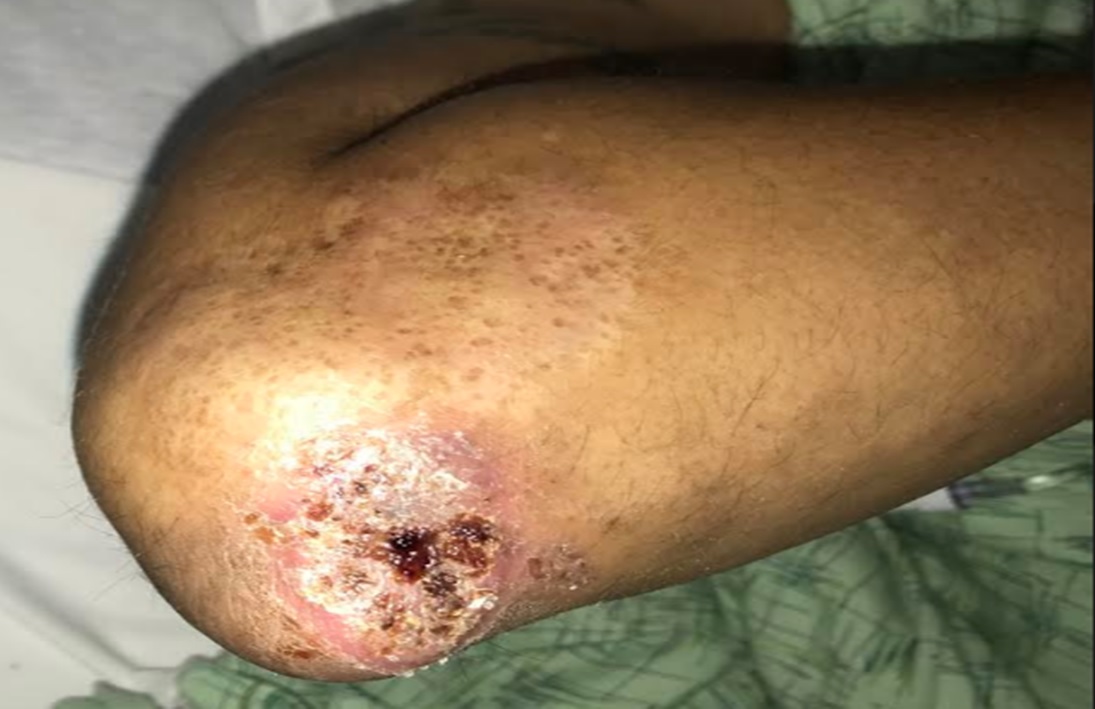Case Presentation: A 40-year-old Caucasian male with a past medical history of polysubstance abuse, with a preference for cocaine, presented to the emergency department complaining of right groin pain. He was diagnosed with purulent cellulitis and broad spectrum intravenous antibiotics were initiated. Initial blood work found low WBC (3.7 x 103/mcL), with a low neutrophilic count (35.7%) on cell differentiation. His urine tested positive for cocaine. Upon further physical examination the patient was found to have multiple ulcerative erythematous papules and plaques on all four extremities at various stages of healing (Figure 1 and 2). The patient stated that they are painful, vary in size and started appearing five years ago. Since these lesions were not the typical retiform purpura found on the ears and nose, levamisole-induced dermatosis was not initially considered on the differential diagnosis. On a previous hospitalization, the patient was evaluated for these lesions with a biopsy that showed dermis with neutrophilic infiltration, focal microabscess formation, edema and hemorrhage consistent with pyoderma gangrenosum (PG) vs Sweet Syndrome. Serologic testing revealed low C3 (85 mg/dL) and C4 (9 mg/dL), as well as positive myeloperoxidase (32.2 U/mL) and p-ANCA (1:320 titer) antibodies: findings consistent with levamisole adverse effects. Although levamisole-induced dermatoses are a diagnosis of exclusion, all these findings make for a compelling case of pyoderma gangrenosum induced by cocaine adultered with levamisole.
Discussion: Pyoderma gangrenosum in patients below 60 years of age has a well-known association with inflammatory bowel disease (IBD). The patient we discuss above has had chronic cocaine abuse, poor health literacy and self-negligence presented to us with PG secondary to levamisole toxicity – a rarity. Top amongst the differential diagnosis was Drug induced- Sweet Syndrome and Levamisole induced PG. Patient did not meet the diagnostic criteria for Sweet syndrome despite meeting the major criteria for this condition. Until recently, levamisole-induced vasculitis was thought to be the only dermatologic manifestation induced by this agent. Recent case reports have begun to describe pyoderma gangrenosum as another dermatologic presentation.1 Pyoderma gangrenosum is commonly associated with inflammatory bowel disease, malignancies and hematologic disorders; however its pathogenesis is not well understood. Although both levamisole-induced dermatoses share similar serologic findings (neutropenia; low C3 and C4; positive p-ANCA and myeloperoxidase antibodies), they are two clinically and pathologically different presentations. Although there is no clear mechanism of action, it is thought that levamisole has immunomodulation properties.2
Conclusions: Eighty percent of cocaine is cut with levamisole, a substance banned in the US since 2000 due to a spectrum of adverse effects ranging from agranulocytosis to vasculopathy.3 Levamisole-induced vasculitis is a well-documented disorder associated with cocaine abuse; however, isolated levamisole-induced pyoderma gangrenosum has only recently been described in the literature as a distinct condition.4, 5 This case demonstrates the temporal association of adulterated cocaine abuse with PG formation and emphasizes the importance of methodic and step wise work up.


